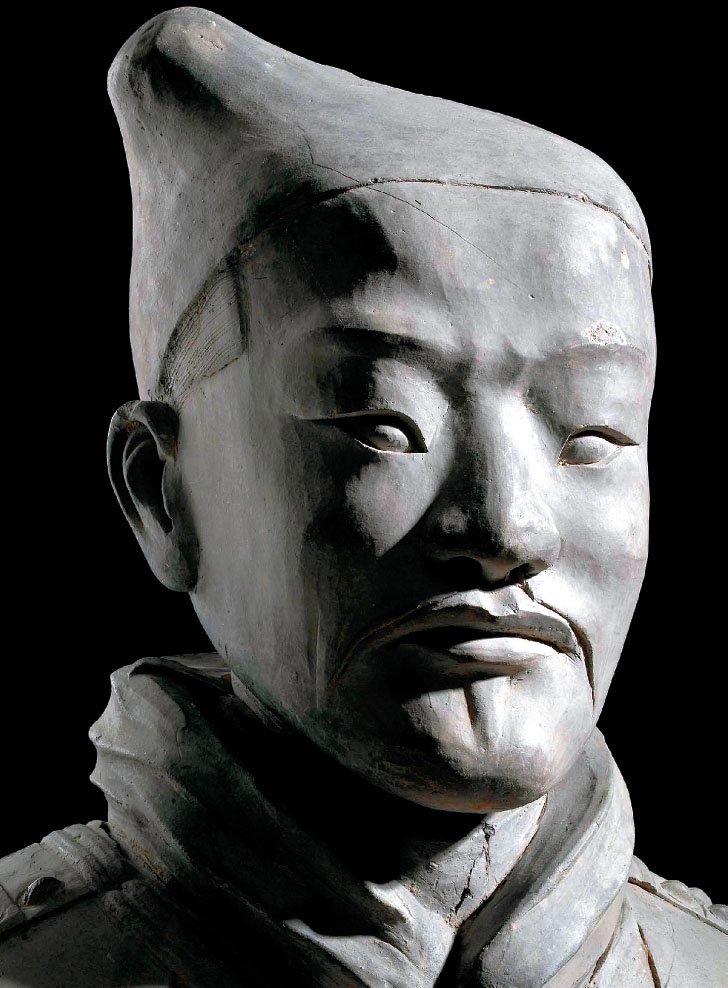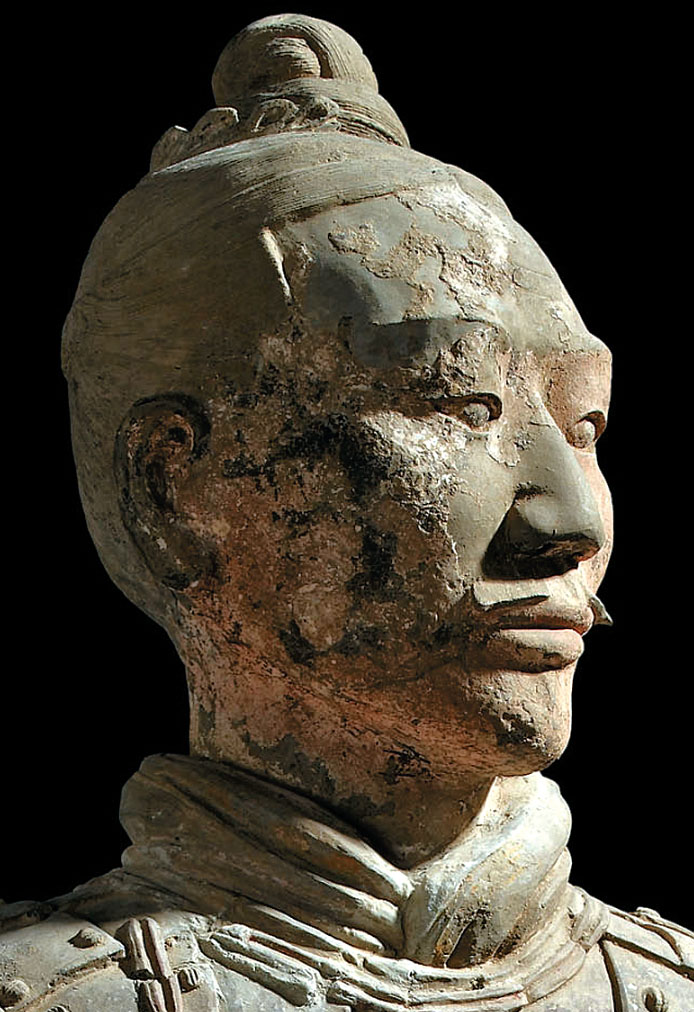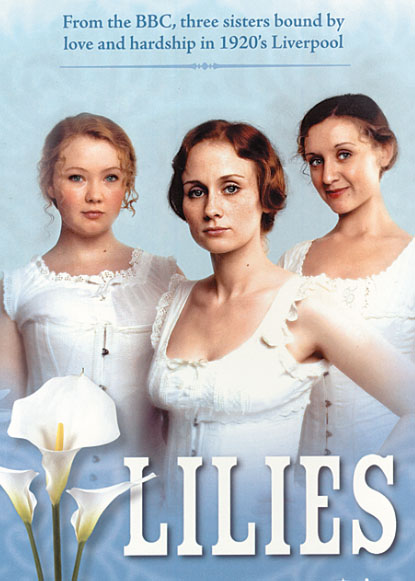
CDATA[[caption id="BeyondtheBookshelf_img1" align="aligncenter" width="728"]

COURTESY OF THE BRITISH MUSEUM
[caption id="BeyondtheBookshelf_img2" align="aligncenter" width="694"]

COURTESY OF THE BRITISH MUSEUM
The First Emperor: China’s Terracotta Army, at the British Museum through April 6, 2008
NOT SINCE THE TUTANKHAMUN EXHIBITION of 1971 has the British Museum seen the excitement generated by the major new show celebrating the life of China’s first emperor, Qin Shihuangdi.
The centerpiece of the exhibition, running now at the British Museum through April 6, 2008, is the largest contingent of China’s terracotta army ever to have left that country.
Widely acknowledged as one of the greatest archaeological finds of the 20th century, the terracotta army was discovered in 1974 by peasants digging a well at Xi’an, in China’s central province of Shaanxi. An estimated 8,000 of the hand-crafted clay soldiers, all with individual faces, were created to accompany the Emperor Qin to the afterlife. More than 1,000 of the figures have been restored.
Ruling from 260-210 BC, Qin Shihuangdi is credited with creating the first unified state in China, effectively establishing the oldest political entity in the world. The first emperor is buried near the four vast pits in which the terracotta army was discovered in a pyramid tomb that has never been excavated.
In 1998 an additional pit was uncovered containing terracotta musicians, court officials and acrobats, suggesting to researchers that Qin wanted to take his entire court into the afterlife. It is estimated that it took a cadre of 70,000 workers some 40 years to create Emperor Qin’s underworld army and court.
The much-anticipated British Museum exhibition brings to London 20 of the ancient terracotta figures, including a dozen soldiers of all ranks, a contingent of courtiers and entertainers, and five horses. It is the first exhibition to be launched in the museum’s historic round Reading Room. In fact, the main doorframe of the room had to be removed in order to move the 900-pound horses into the gallery.
“The First Emperor: China’s Terracotta Army” is one of London’s don’t-miss events of the year. The exhibition is open during regular British Museum hours. Admission, however, is by timed ticket only. Exhibition tickets can be booked ahead online at www.thebritishmuseum.ac.uk. They can also be acquired at the museum’s box office or on telephone 44 (207) 323 8181.
Lilies, DVD 3-vol. boxed-set, Acorn Media, Silver Spring, Md., 467 minutes, $49.95.
BY THE TIME THE GUNS FELL SILENT in the trenches of World War I, Britain had lost 2 million young men with barely a family untouched. In the early 1920s, there were few young men around—only the wounded and the very lucky. Throughout the next generation, the nation struggled to recover.
Lilies is a story about the wounds of war on a working-class family in Liverpool, as grim and gritty as the city itself. Its themes are many: the struggle for dignity in poverty, the agonizing quest for individual happiness against the constraints of family and community, the hidden social cost of war, how humanity trumps the prejudices of religion.
A young widower himself at 43, Dada Moss presides with Irish macho over a family of young adults fractured by the war. Walter got killed at Paschaendale; Billy suffers from post-traumatic stress after surviving the Battle of Jutland. Iris, May and Ruby are their father’s lilies, sharing a single bed and a close sisterhood, each one struggling to find a life of her own while contributing whatever cash they can earn to the household.
[caption id="BeyondtheBookshelf_img3" align="alignleft" width="415"]

Unusual for their time and place, the Mosses are a mixed family. Dada Moss, like his father before him, is an Orange Ulsterman; the boys were raised with his virulent Protestantism—celebrating July 12 as the year’s highlight. Like their late mother, the girls are Roman Catholic and their young neighborhood priest is treated as part of the family.
There is an old North Country expression that says, “Poverty shared is poverty lightened.” In the red brick working class world of Liverpool, money is in very short supply. Cash poor as life is, however, in the colorless, crowded streets of the neighborhood, the sense of community is strong. Against the outside world of class-based authority, it presents a united front. But the community has its own harsh rules and social authority as well. Against that hard reality, only the family unit is a buffer.
Ultimately, each of the Moss individuals finds fulfillment in the solidarity of the family. Every one of them makes personal sacrifices for the strengthening of the whole. While Iris, May and Ruby test the bounds of family loyalty and push against the fences of social propriety, in the end they find contentment and dignity in choosing to surrender their individual aspirations for the mutual love and support of the family. It is impossible not to love them all.
Sticking with the family seems an oddly anachronistic theme in our own time and place. Nowadays, in general, we go our own way, scatter across the land and never look back. Whatever successes and failures, joys and heartbreaks, public applause or social disapprobation we engender, they are ours alone. It was the literary theme of the 20th century: finding individual identity. And if we fall, it’s not the family that picks us up, it’s the anonymity of 911—or any of a gross of social service agencies and charities. Perhaps Lilies is a bit of a corrective. We would never want to live in their world, yet we are left with a wistfulness for what our individualistic society has lost.
This eight-episode BBC production stands with the best in the tradition of epic British miniseries, finely made and finely edited. If there is a flaw in the production, it may be intrinsic to the integrity of the story: The dialog is sometimes hard to follow. The Mosses are Scousers, after all, and that Liverpool dialect can be a challenge to our BBC-tuned ear. Even if you have to tune the volume up a bit, or replay an occasional scene, however, Lilies is absolutely gripping. You can put this in my Christmas stocking any year.
The Rebirth of St. Pancras
IN 1964 ST. PANCRAS STATION was just 10 days away from demolition. Much of London had already been pulled down; St. Pancras was next for the wreckers’ ball. That the station still exists at all is to the credit of Sir John Betjeman, then poet laureate, for putting his not unsubstantial clout behind the campaign to get William Barlow’s 1868 masterpiece listed in the nick of time.
St. Pancras Station was built as a piece of one-upmanship during the 19th-century wars of the railways. Kings Cross Station next door and Euston, a couple of hundred yards up the road, were owned by rival lines, so the Grand Midland Company gave Barlow carte blanche to build the finest station ever created. Throughout the Age of Steam and well into the 20th century it was a hub of activity, but as the steam ran out, so did the cash.
Under the double-blow of British Railways’ Richard Beeching and nationalization, the railways and the stations suffered. Broken slates and windows were replaced with corrugated iron, plastic, asbestos, anything. Damaged chimneys were chopped, and holes in cast iron were filled with concrete. Years of smoke-belching locomotives followed by stinking diesel trains left a layer of filth so thick (2 -3 inches in places) on St. Pancras’ walls that pressure hoses were useless. The filth was eventually chipped away with hammers.
[caption id="BeyondtheBookshelf_img4" align="aligncenter" width="678"]

ANDY BUTTERTON/PA ARCHIVE/PA PHOTO
St. Pancras’ salvation was the arrival of the new Eurostar terminus, moved from a cramped and impractical corner of Waterloo. Barlow’s 19th-century gothic masterpiece has been restored for the opening of the re-routed High Speed One, retaining as much of its history and purpose as possible.
A big problem with Grade I listing is that its very preservation makes a building unviable for modern use. In St. Pancras’ case, this meant some tough negotiations with English Heritage to transform the building from an interesting dinosaur into a truly exciting 21st-century marvel.
When Kings Cross was built, the trains went underneath the somewhat inconveniently situated Regents Canal just outside. But this meant that the trains had to work extra hard to climb out of the tunnel. So when Barlow began his pièce de résistance at St. Pancras, he decided to show off and go over the canal. The knock-on, however, was that arriving trains would now be going downhill into the station and horrid visions of trains-through-front-wall haunted him. So he decided to build the platforms on a mezzanine. Barlow created an artificial platform for the trains, supported by 850 gigantic cast-iron pillars. This had the added benefit of storage that could be rented out to the beer companies supplying London from the Midlands. The columns are set three barrel-width apart.
Large wells were sunk into the original concourse, bringing light and air into what would have been dark, dank caverns. Now, Eurostar ticket holders can enjoy a sea of columns while waiting for their train. The rest of the old undercroft is a shopping and hospitality area. The old, broken chimneys have been lovingly restored and given a new life as air-conditioning vents; the glorious booking hall will now become the reception for the five-star hotel.
The sky-blue color of the overarching ironwork is, to some eyes, very un-Victorian but, after scraping their way through 18 layers of paint, the restorers found that the powder-blue paint they had assumed was undercoat was the real thing. A trip to the British Library revealed the secret—the first station-master had decided “to bring the sky inside.”
More surprises came when conservators cleaned the thick layer of filth from the eves. They discovered not only an exquisite filigree border but also a layer of glazed gothic tiling running around the top of the station that no one knew about.
For a place that survived a direct hit in World War I, two doodlebugs in World War II and decades under British Rail, St. Pancras has scrubbed up well. The stunning Victorian engineering, a marvel in itself, is merely enhanced by modern elements such as plasma departure screens, Europe’s longest champagne bar and a new gastropub—rather fittingly named the Betjeman Arms.
Sandra Lawrence
Invasion 1982: The Falkland Islanders’ Story, by Graham Bound, Pen & Sword Books, South Barnsley, Yorkshire, 234 pages, hardcover, &doller;39.95.
IT WAS A JUBILANT SUMMER in Britain. I remember buying pints down in Cornwall in 1982 for cheerful young soldiers just back from the Falklands. The country had needed a real morale boost for some time. Argentina gave it to them. Britain’s successful military action repulsing the Argentine invasion of the Falkland Islands stands to this day as a just source of national pride. The swift, determined action of British air, land and naval forces operating with lines extended across the Atlantic prohibitively far from supply and support has been lauded, examined and written about time and again.
[caption id="BeyondtheBookshelf_img5" align="aligncenter" width="698"]

Every war, of course, has a home front. For the residents of the Falkland Island, home was the front. After years of claims, wrangling and threats, the military of the Argentine junta invaded the British islands located off their southeast coast.
Unsure, untested Argentine officers and men occupied the principal town of Stanley, deported British officials, exercised martial law, terrorized and threatened residents, threw up military fortifications, took over communications and treated Stanley’s 2,000 citizens as the enemy.
Across the bays, mountains and moorlands of East and West Falkland, the isolated villages and farmsteads of the islands were similarly besieged as Argentine occupation forces swept the islands in their helicopters and Pucara ground-attack aircraft and dug in to their land and their lives.
This is the story of how a small island community of several thousand people conspired, sabotaged, coped, thrived and survived a war when their home was the battlefield being defended by the enemy.
Graham Bound should know the story. He was there and they are his people. In 1979, Bound founded the Penguin Times, the only newspaper in the Falklands. He was the editor in 1982, and lived through the three-month occupation at the Upland Goose Hotel in the heart of downtown Stanley.
Invasion 1982: The Falkland Islanders Story reads eerily like a gripping adventure yarn. It could only have been told by someone who was in the center of the action and knew the characters as people. Appropriately for a newspaperman, though, Bound tells the story as an impersonal observer. The story is told in the third person, and Bound only references himself indirectly a couple of times.
What a story this is. And what a way to get to know the Falkland Islands and its people. All of the human emotions are here and all of the ways in which people suffer and triumph in war. The very human scale of the small community and the defined parameters of the islands makes this a war story easy to understand and easy to identify with.
It is impossible not to care for these people as they rip the floorboards up from their houses to dig earth bunkers for their families, and as they form a convoy of farm vehicles to make 14-hour round-trip drives across hostile terrain ferrying supplies and British soldiers inland. They live through weeks of brandished weapons, siege and bombardment. Their risks, narrow escapes and deprivations are made real.
This is an inspiring story, not a tragic one. For the inevitable suffering that war entails, the Falkland Islanders themselves came through the events with relatively little loss of life and with a spirit of community strong and healthy for the rebuilding that lay ahead. For the British citizens of the Falklands, this was their finest hour. Here’s a terrific read to add to your Christmas list.





Comments